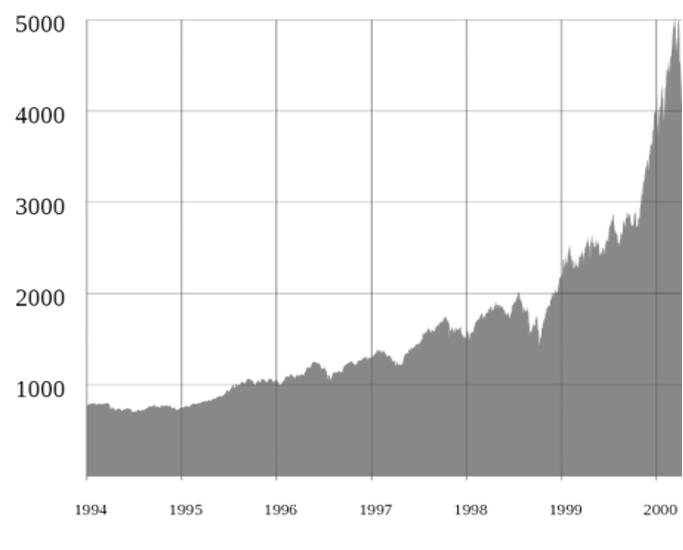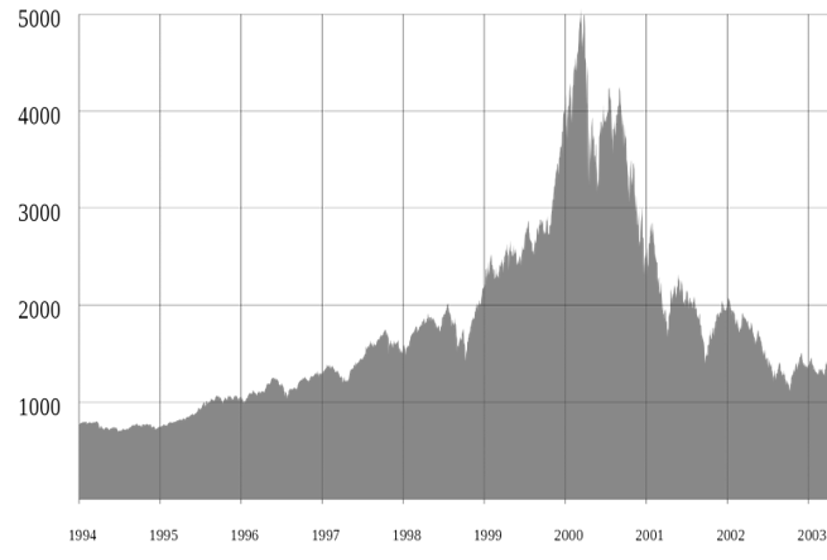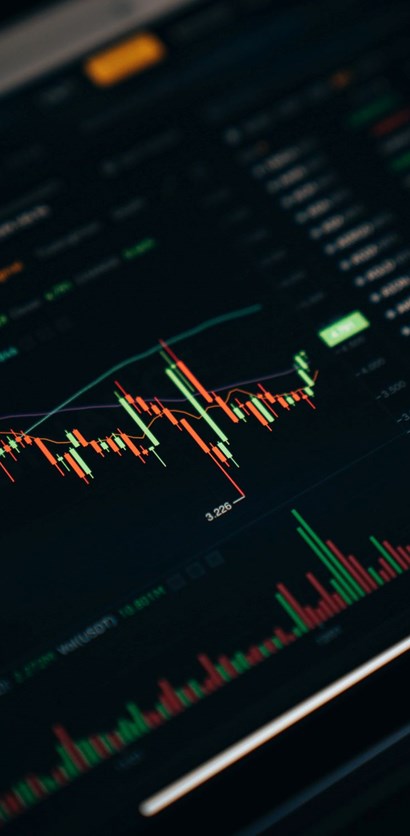A question for our readers: based on the price performance of the asset class shown below, would this have been a good investment to make in the year 2000?
A Good Investment Opportunity?

The chart above shows the price performance of the NASDAQ Composite Index, the US-listed index of technology stocks. With the emergence of the internet in the 1990s, investors correctly identified that this new technology would transform the world. This translated in a rush to put money into this new sector, which resulted in the NASDAQ rising in value by more than +500% between 1995 and 2000.
A Good Investment Opportunity? (Part 2)

The chart above continues the same price series of the NASDAQ shown previously, moving it forward to show what happened in the subsequent years. Between 2000 and 2001, the NASDAQ declined by 85%!
Every speculative bubble in history has used its past price performance as reason to invest, without any other justification. The ‘fear of missing out’ drives this, with new money entering the asset in anticipation that past price rises will be repeated. But this process, increasingly detached from reality, cannot last forever.
So, are we in a bubble now? The answer is: it depends on what you are invested in. Some assets today look very much like speculative bubbles, with previous price rises being used to justify new investments today. These should be avoided by investors and treated as purely speculative.
Our first NASDAQ price chart (1994-2000) looks very similar to the price performance of Bitcoin to-date. Bitcoin is not a capital asset or a store of value, it is a vehicle for speculation. Speculative assets can go up in price and to those speculators who have made money on Bitcoin, kudos. But investors must not confuse this with investing. This is speculation and has far more in common with making a bet on a horse-race than investing in a successful future business.
The hype around electric vehicles and Tesla means Tesla’s stock price has gone stratospheric, again looking very similar to the first NASDAQ price chart shown earlier. Current Tesla valuations are virtually impossible to justify. At Dominion, as investors we have avoided Tesla because we never believed the valuation was justified. But we have not avoided the electric vehicle space, which is still a very exciting investment trend.
What differentiates our strategy is our ‘GARP’ approach. GARP = Growth-at-a-Reasonable-Price. This means that we hunt for high growth businesses to invest in, but we only invest if the valuation is appealing too. By marrying growth with attractive valuation, we minimize the risk of a sell-off in expensive stocks (like Tesla) due to overvaluation. In fact, a major sell-off in hype stocks and assets like Bitcoin would be a good thing for our investment funds, because we don’t own those very expensive hype stocks. If and when they eventually fall to earth, this will pull down indexes (S&P 500, NASDAQ, etc.) because they are large constituents in those indexes. If indexes fall that means index tracker funds (ETFs) fall too. Meanwhile our funds and others like them will be avoiding this problem and outperforming the indexes because, as active investors, we have the advantage of being able to select which stocks we buy and, just as importantly, select which assets to avoid.
In the electric vehicle space, our GARP strategy led us to invest in BYD, the leading Chinese EV manufacturer, a company that outsells Tesla, has better technology and a stock with a much more attractive (and realistic) valuation. We’ve generated more than +200% return on our investment in BYD. This may lag Tesla’s performance but we’ve achieved this return without speculating on the share price. The risk inherent in investing in Tesla means that the stock could fall 90% just as quickly as it has risen. As long-term investors we think time will eventually prove us right to focus on business fundamentals rather than chasing the hype. This approach to investing has worked since the beginning of stock investing and we are confident that will not change.








